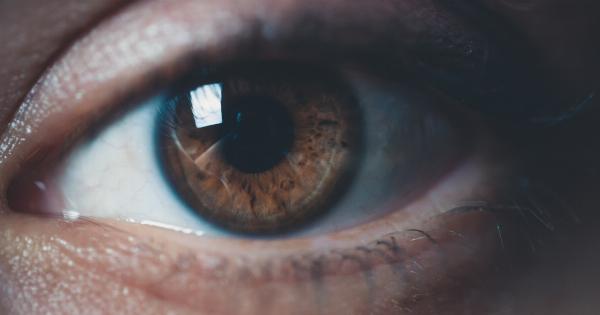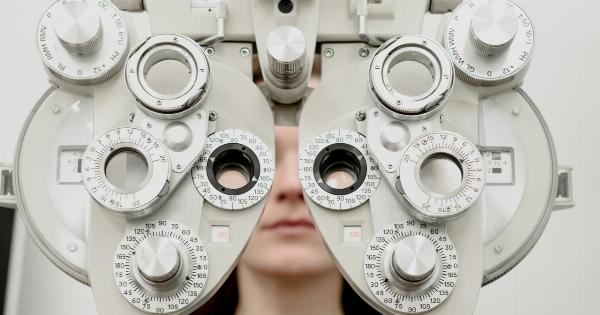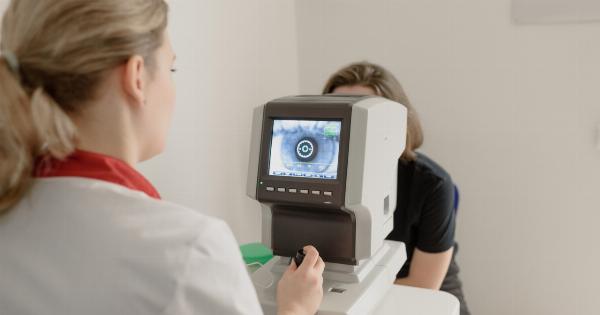Dry eye syndrome is a common condition that affects millions of adults worldwide. It occurs when the tears produced by the eyes are not of good quality or sufficient quantity.
This condition results in a sensation of dryness, itching, burning, and sensitivity in the eyes, which can have a significant impact on an individual’s quality of life.
Dry eye syndrome can be caused by several factors, including environmental conditions, medication side effects, aging, hormonal changes, and underlying medical conditions such as diabetes, rheumatoid arthritis, and Sjogren’s syndrome.
Symptoms of Dry Eye Syndrome
The symptoms of dry eye syndrome include:.
- Stinging or burning sensation
- Feeling of sand or grit in the eyes
- Redness in the eyes
- Itching sensation
- Excessive tearing
- Blurred vision
Impact of Dry Eye Syndrome on Children’s Eyesight
Dry eye syndrome not only affects adult’s eye but also has a significant impact on children’s eyesight. Children’s eyes are still developing, so any vision problems can have long-term consequences.
Dry eye syndrome in children can cause the following:.
- Eye irritation
- Blurred vision
- Difficulty reading or concentrating
- Eye fatigue
- Difficulty with distance vision
Causes of Dry Eye Syndrome in Children
The following are some common causes of dry eye syndrome in children:.
- Prolonged use of digital devices such as smartphones, tablets, and computers.
- Allergies or allergic reactions to chemicals, dust, or pollen.
- Medications that can cause dry eyes as a side effect.
- Underlying medical conditions such as Sjogren’s syndrome, rheumatoid arthritis, and diabetes.
- Environmental conditions such as low humidity and air conditioning.
Prevention and Treatment of Dry Eye Syndrome in Adults and Children
Prevention and treatment of dry eye syndrome can vary depending on the cause and the severity of the condition. Here are some ways to prevent and treat dry eyes:.
1. Blink More Often
Blinking helps in spreading the tears over the surface of the eye. Hence, it is essential to blink regularly while using digital devices or during any physical activity.
2. Maintain a Healthy Diet
Eating a diet rich in omega-3 fatty acids helps in reducing inflammation in the body, including the eyes. Foods such as salmon, sardines, chia seeds, and flax seeds are a good source of omega-3 fatty acids.
3. Use a Humidifier
A humidifier can help in adding moisture to the air, which can help relieve dry eyes. It is especially helpful in areas where the air tends to be dry, such as during the winter months.
4. Use Eye Drops or Artificial Tears
Using lubricating eye drops or artificial tears can help in keeping the eyes moist and reducing dryness and irritation. It is essential to consult a doctor before using any eye drops as they may have side effects.
5. Consult a Doctor
If the symptoms of dry eyes persist, it is crucial to consult an eye doctor to determine the underlying cause and get appropriate treatment. The doctor may recommend medications or suggest lifestyle changes to manage the condition.
Conclusion
Dry eye syndrome is a common condition that affects both adults and children. It can have a significant impact on an individual’s quality of life, causing discomfort and blurred vision.
The prevention and treatment of dry eyes can vary depending on the cause and severity of the condition. By following some simple lifestyle changes, using eye drops or seeking medical help, people can manage this condition and prevent its adverse effects on their eyesight.
























